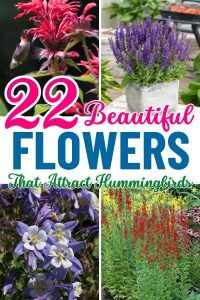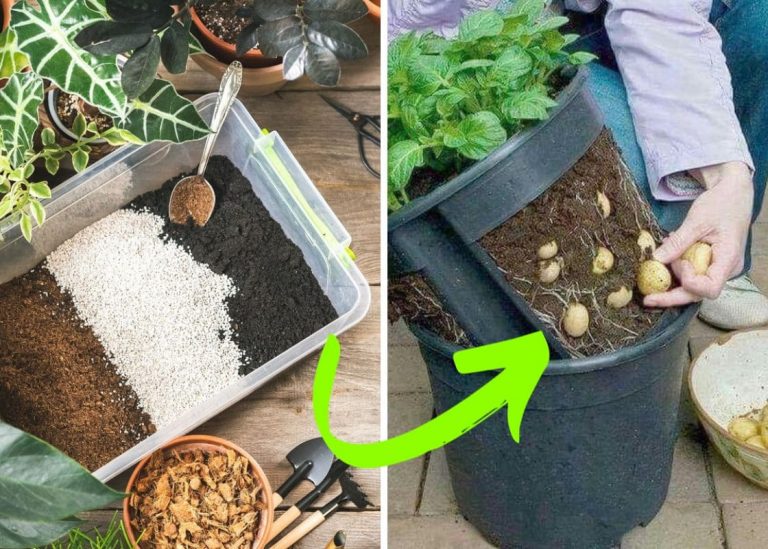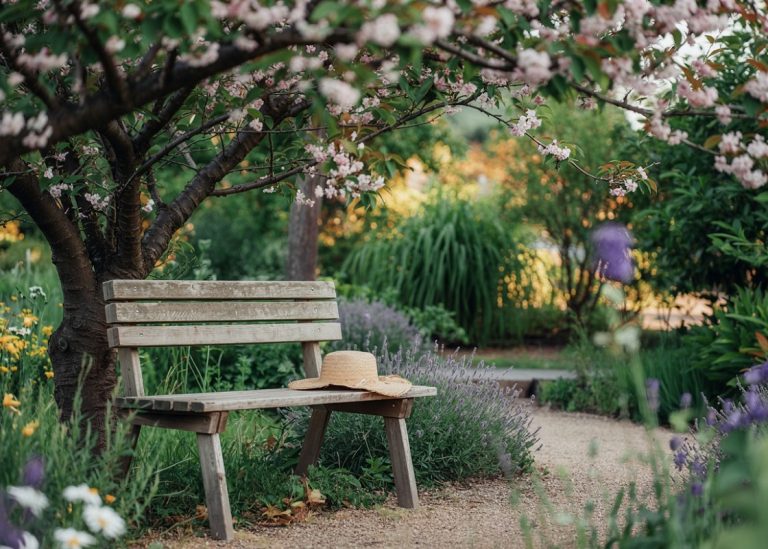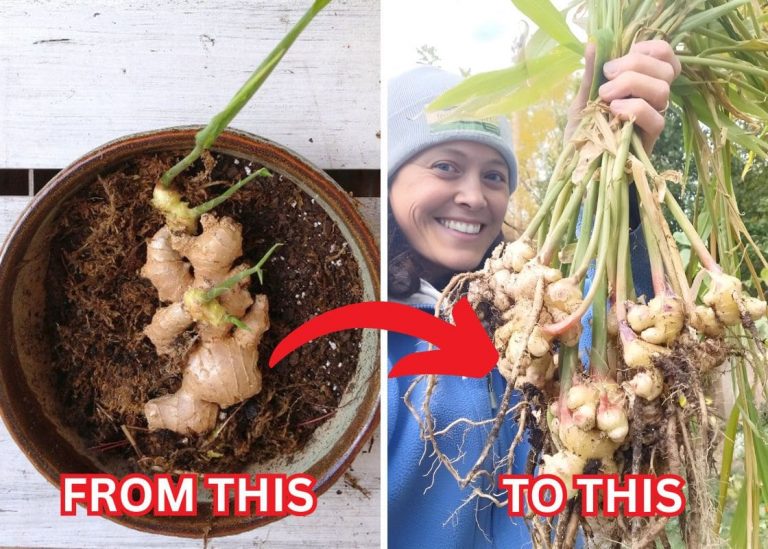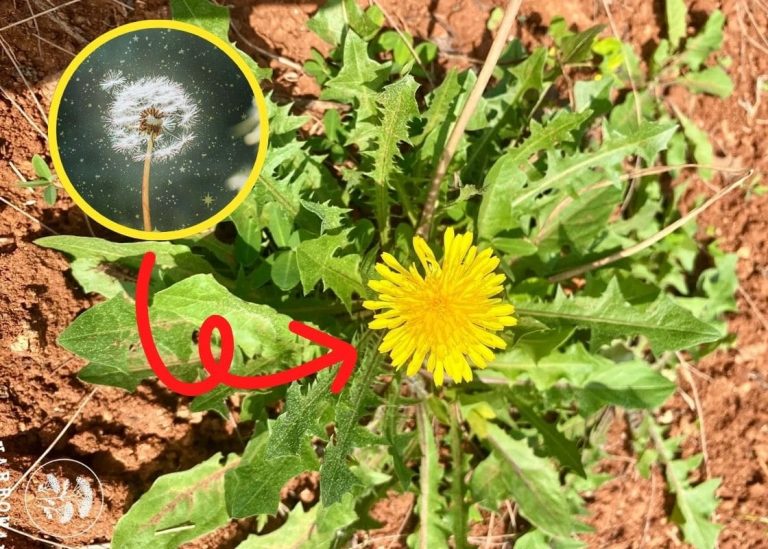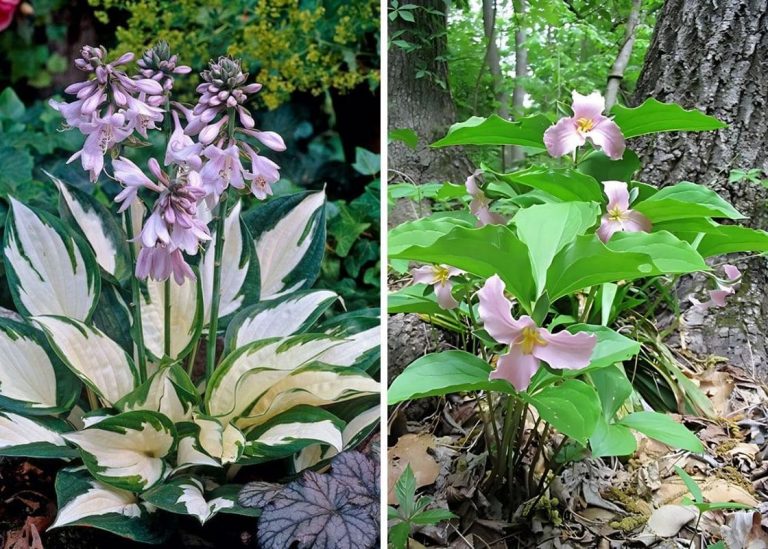20 Beautiful Flowers That Attract Hummingbirds And Enchant Your Garden
Standing still in the middle of the garden, it’s not the bright flowers that catch my breath—it’s the sudden flicker of iridescent green, the soft whirring of tiny wings brushing the air. A hummingbird hovers for a second over a bloom, then vanishes, leaving a kind of magic lingering behind.
Watching these little marvels weave through the garden feels like sharing a secret world, one stitched together by color, nectar, and movement. The first time a hummingbird chose my garden as a stop on its endless journey, it felt like a small blessing I hadn’t even known to ask for.
What I learned, quietly and joyfully, is that the right flowers invite them to stay a little longer. Tubular blooms, bursts of reds and oranges, plants rich in sweet nectar—they build a garden that doesn’t just bloom; it sings. Year after year, adding a few more hummingbird favorites has turned simple beds into living, fluttering murals.
#1. Trumpet Vine
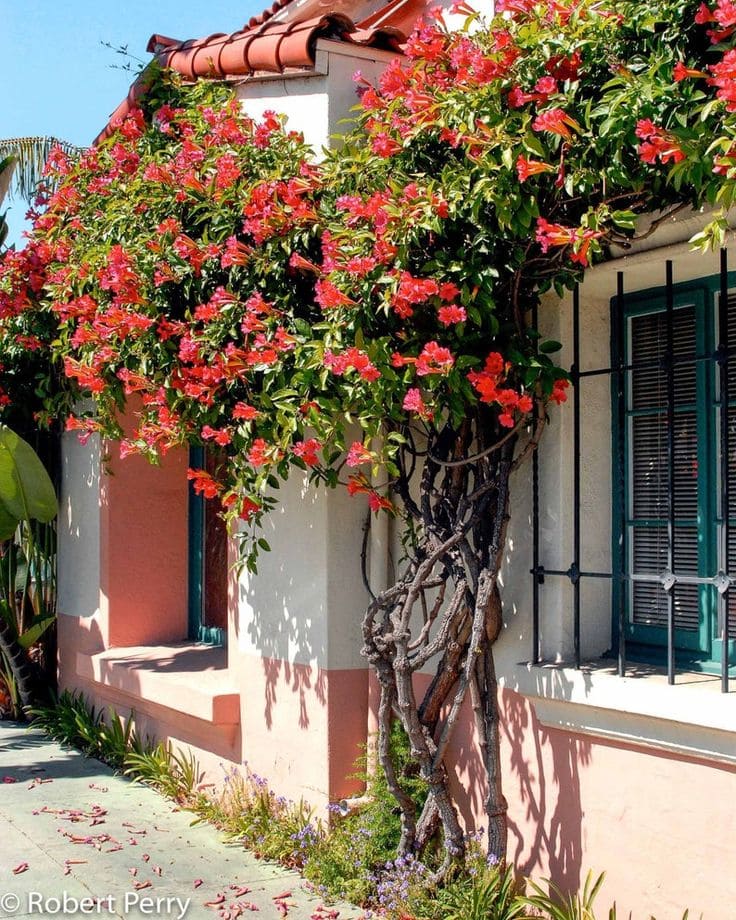
Along the fence that borders my vegetable garden, a trumpet vine climbs wildly, its fiery orange blooms blazing like tiny suns against the greenery. Every morning, I find hummingbirds darting in and out of its blossoms, sipping nectar with astonishing grace.
Trumpet vine is truly a feast for hummingbirds. Its tubular flowers are packed with sweet nectar, perfectly shaped for their slender beaks. While it grows fast and can get a bit unruly, careful pruning keeps it in check and lets it remain a spectacular beacon for winged visitors.
#2. Bee Balm

Near the back corner of my herb garden, bee balm throws up bursts of spiky blooms in shades of raspberry red and dusky pink. There’s a wildness to the way it grows—untamed, joyful—and the hummingbirds seem to love it as much as I do.
Bee balm not only brings color and vibrancy, but it acts as a magnet for all kinds of pollinators. Hummingbirds, bees, and butterflies flock to its rich nectar supply. It thrives best in sunny spots with a touch of moisture, rewarding you with weeks of dazzling, lively beauty.
#3. Salvia

In the center bed where the sun hits hardest, a row of crimson salvia plants holds court. Their tall, elegant spikes sway gently in the breeze, and the hummingbirds can’t resist their call.
Salvia’s slender, vibrant flowers offer an almost endless nectar supply from spring through fall. Red varieties in particular seem irresistible. Drought-tolerant and easy-going, they make a perfect, low-maintenance addition to any hummingbird garden. One year, I planted ‘Hot Lips’ salvia—and it truly lived up to its name, smothered in tiny, buzzing visitors every afternoon.
#4. Cardinal Flower
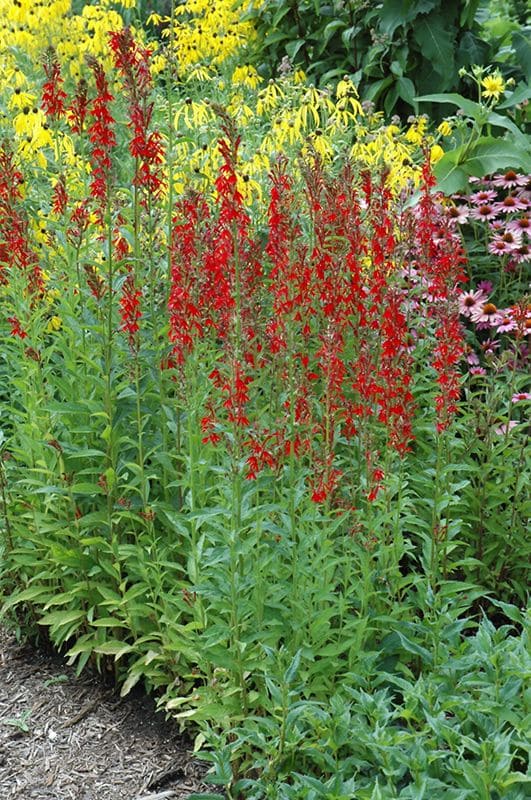
Tucked close to the small stream that runs by my neighbor’s pasture, cardinal flowers light up the wet ground with a startling, velvety red. On warm evenings, you can spot hummingbirds hovering like tiny jewels, pulling long sips from the nectar-rich blooms.
Cardinal flower prefers moist, rich soil and partial sun, making it a perfect choice for the lower, wetter parts of a garden. It’s one of the few brilliant red perennials that bloom late into summer, providing vital food for hummingbirds when other sources begin to fade.
#5. Fuchsia
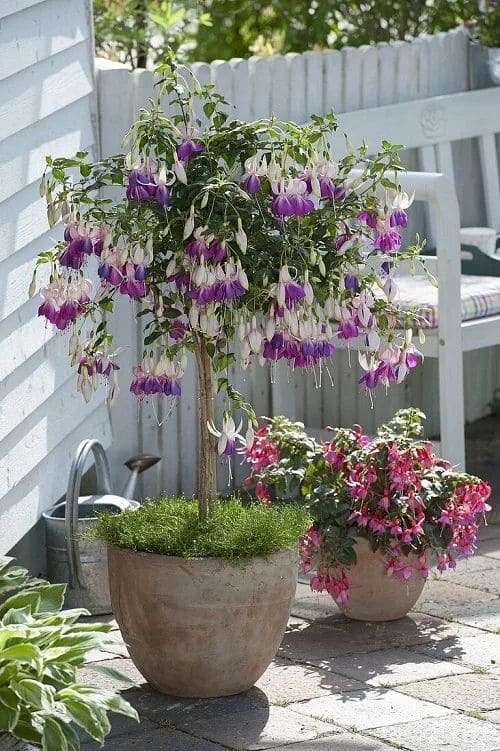
Swinging gently from the hooks along my porch, fuchsia baskets spill over in cascades of pink and purple. Some afternoons, I sit with a book and lose track of the story, enchanted instead by the tiny green birds threading through the dangling blooms.
Fuchsia’s pendulous, bell-shaped flowers are designed perfectly for hummingbirds, offering nectar deep within their colorful cups. Ideal for shaded or partly shaded spots, they thrive with consistent moisture and reward with blooms that feel almost too beautiful to be real.
#6. Columbine
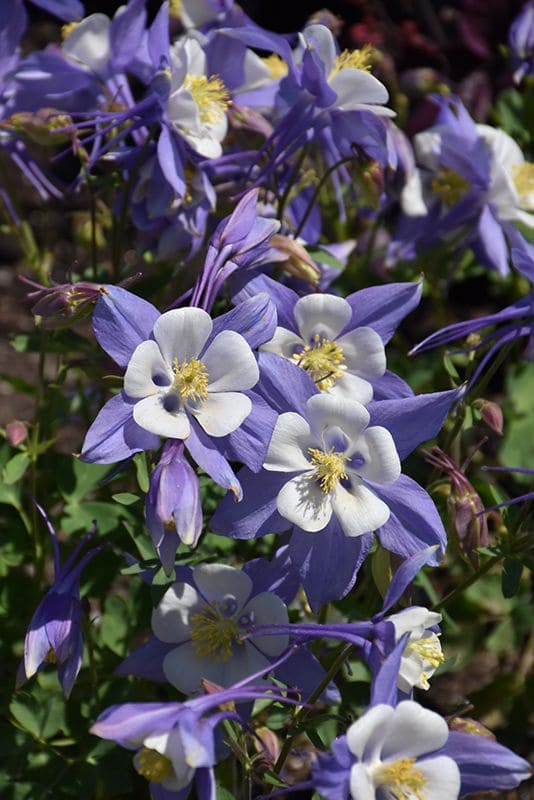
In the soft light of early spring, columbine pops up like a delicate surprise among the emerging greens. Their whimsical, spurred flowers nod gently in the breeze, and without fail, hummingbirds find them within days of blooming.
Columbine’s red and yellow varieties are especially beloved by these tiny birds, offering an early-season nectar source just as migration peaks. They thrive in partial shade and loose, rich soil, adding a sprinkle of magic to shady corners and woodland edges where colors sometimes feel muted.
#7. Lupine
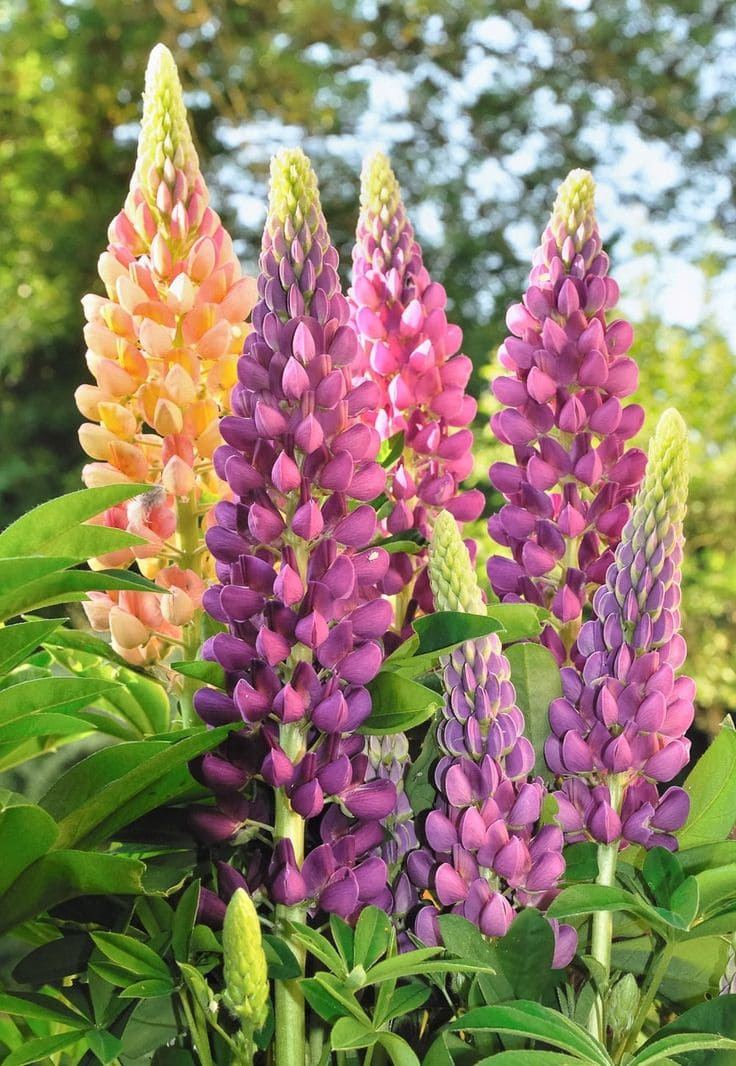
Waves of lupine rise in my front bed like colorful candelabras, their tall spires painting the early summer garden in strokes of purple, pink, and soft blues. It’s common to see hummingbirds tracing lazy loops from one flower to the next, their wings a soft hum against the stillness.
Lupines not only enchant the eye but also nourish the soil with their natural nitrogen-fixing roots. They prefer well-drained soil and a good dose of sun or dappled light. Grouped with bee balm or salvia, they create a vivid, buzzing haven that supports the whole garden’s ecosystem.
#8. Penstemon
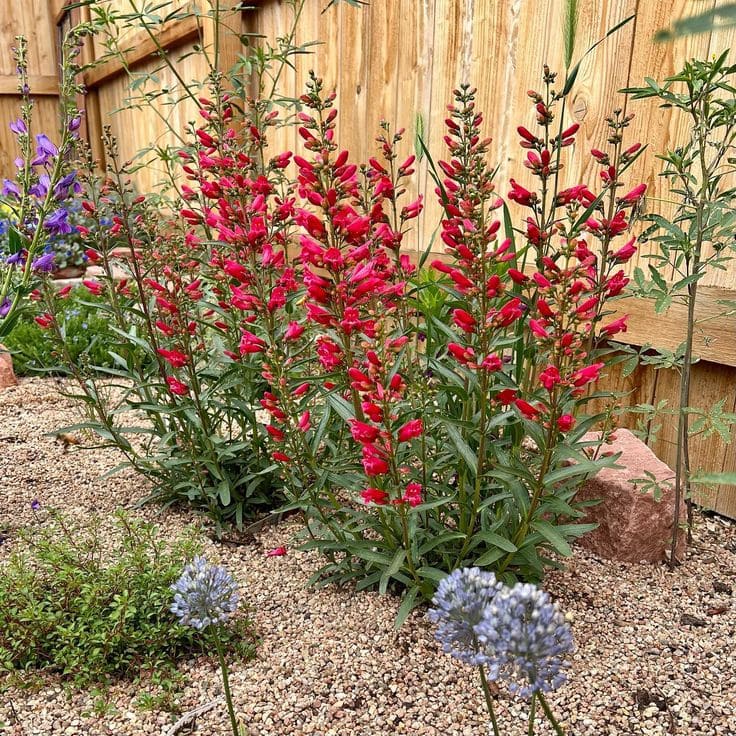
At the far edge of my vegetable beds, penstemon blooms like little bursts of trumpets in every shade of rose, lavender, and crimson. Even when the garden is still, the patch shivers with activity as hummingbirds dip and weave through its tubular blossoms.
Penstemon is drought-tolerant once established and thrives under full sun. Its elegant spires bloom for long stretches of the summer, providing both beauty and sustenance. I love how the flowers seem to glow in the late afternoon light, each one a tiny flag waving hummingbirds home.
#9. Honeysuckle
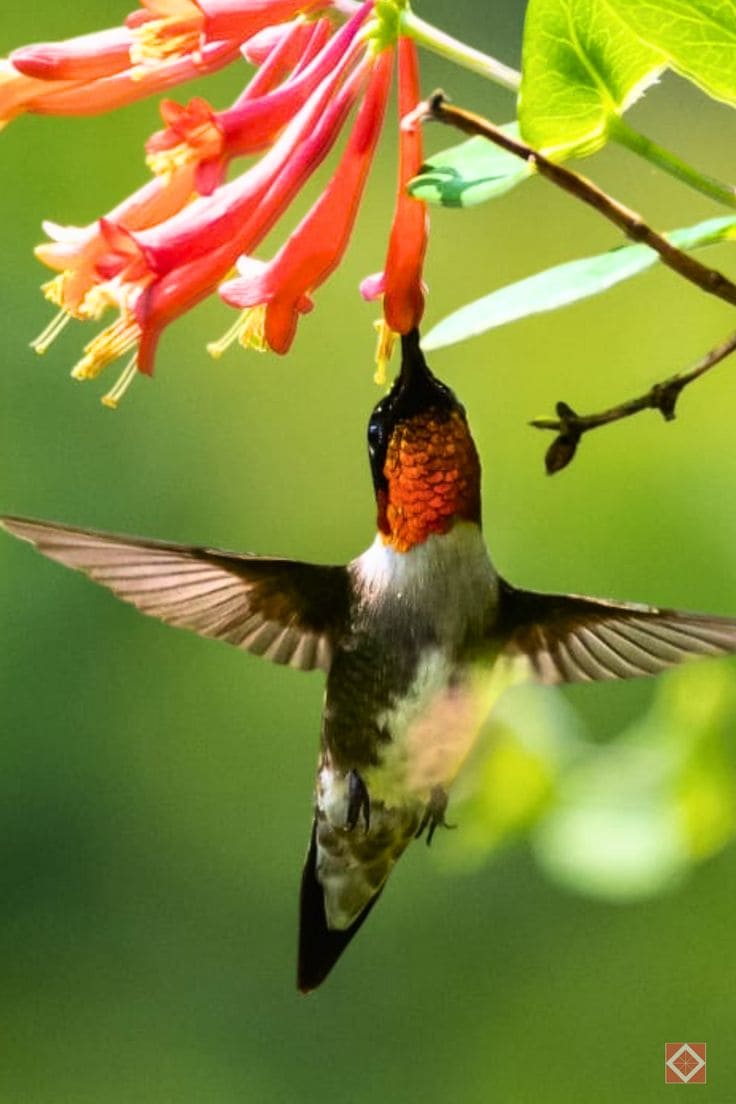
Where my garden gate swings open, a honeysuckle vine twines thickly, draping golden and coral flowers over the fence like a living garland. In the cool mornings, hummingbirds are often there first, sipping from the dewy blooms before the heat of the day sets in.
Honeysuckle’s sweet, fragrant flowers offer generous nectar, blooming again and again through the warm months. Whether climbing up a pergola, twining along a fence, or trailing from a large container, honeysuckle creates a fragrant, lively corridor that hummingbirds simply can’t resist.
#10. Butterfly Bush
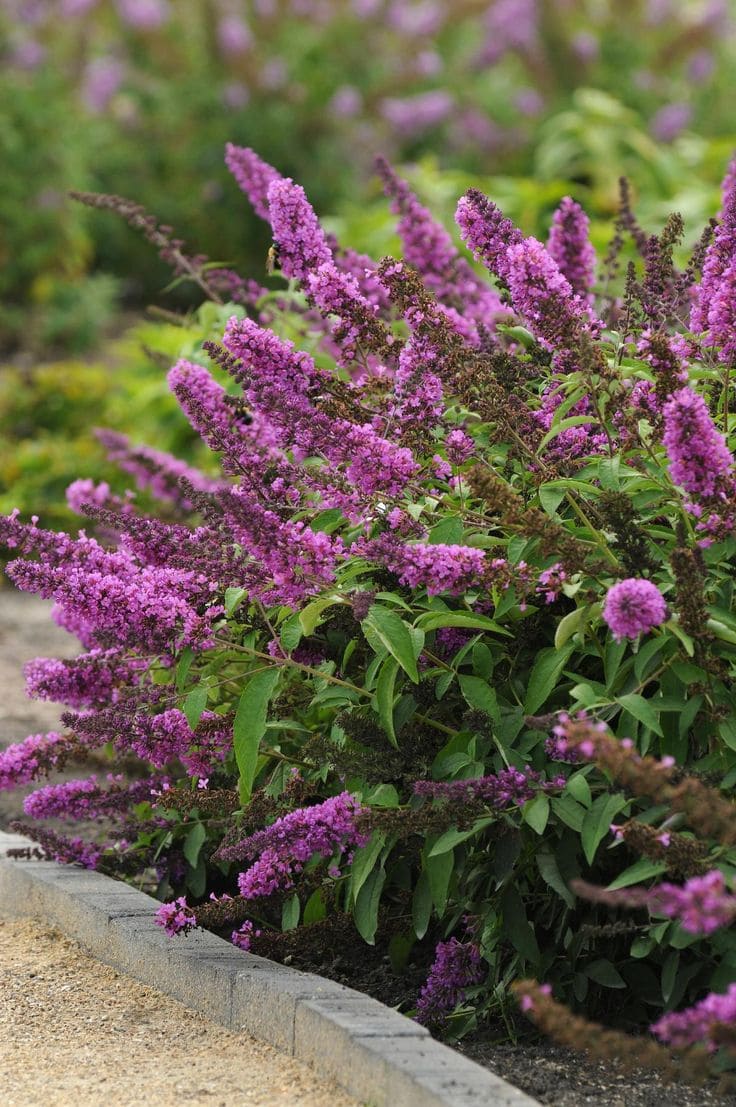
Growing along the back fence where it catches full sun, my butterfly bush explodes into cones of lavender and deep magenta flowers each summer. It’s a magnet not just for butterflies, but for every hummingbird in the neighborhood.
Butterfly bushes bloom abundantly from midsummer to fall, providing reliable nectar when other sources may wane. They require little beyond a good spring pruning and plenty of sun, making them a low-maintenance powerhouse in any pollinator-friendly garden.
#11. Firecracker Plant
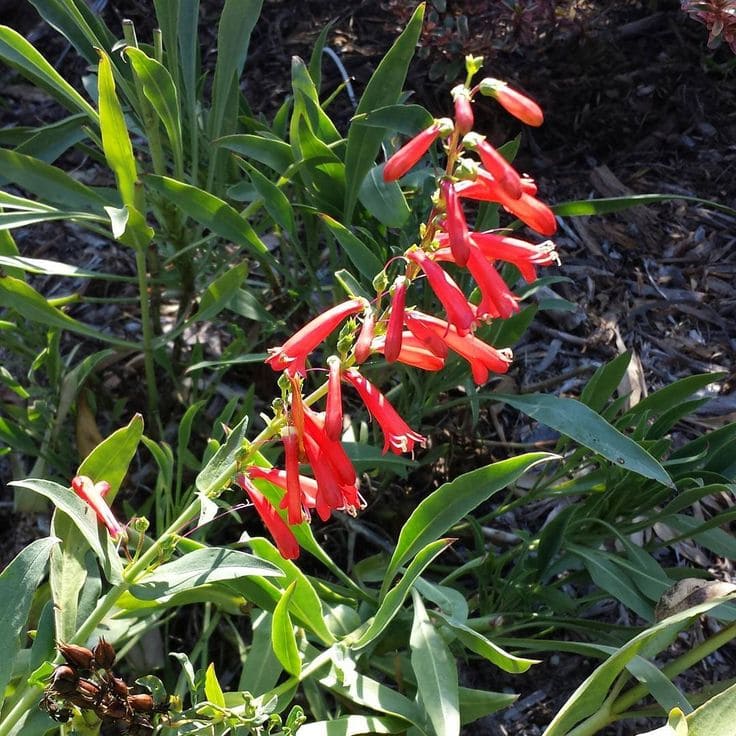
Near the southern wall of my garden, where the heat lingers longest, firecracker plants tumble in bright cascades. Their scarlet, tubular blooms seem to dance in the breeze, and more often than not, tiny hummingbirds are drawn in like sparks to a flame.
The firecracker plant thrives in warm, sunny spaces, blooming steadily through the growing season. Its thin stems and countless blossoms create a fiery waterfall effect, filling containers, borders, and even hanging baskets with color and endless nectar.
#12. Petunia
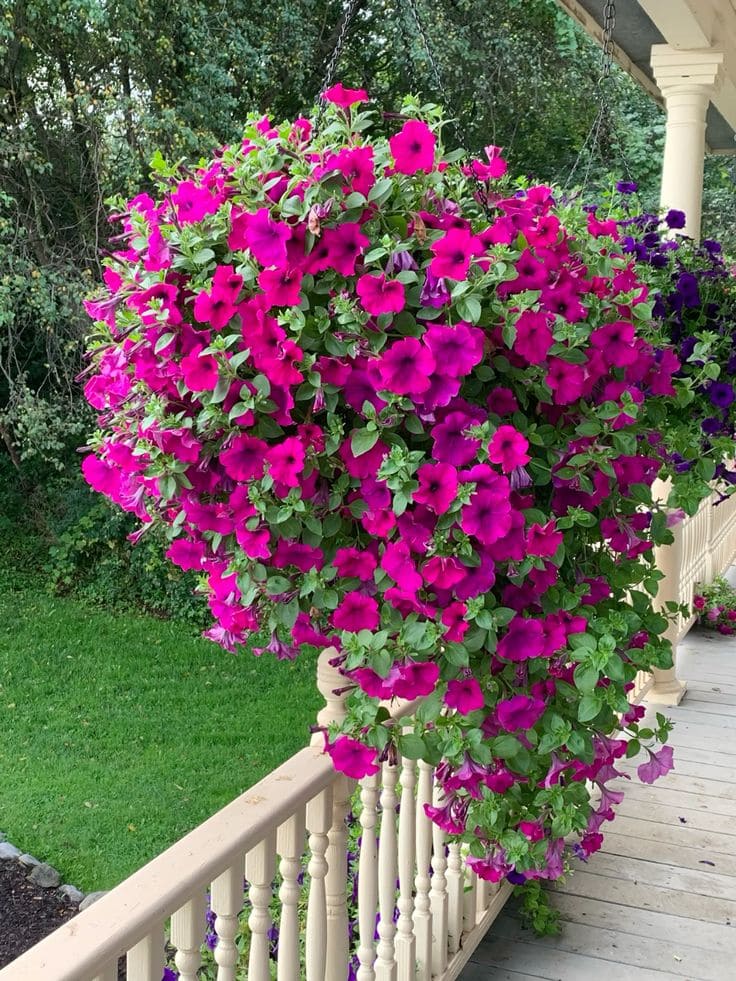
On the railing of my front porch, pots spill over with petunias in shades of crimson, deep violet, and snowy white. Hummingbirds zip between the blooms, their slender beaks dipping gracefully into the soft, velvety petals.
Petunias may seem simple, but they’re reliable favorites for attracting hummingbirds, especially red and purple varieties. Easy to grow and blooming non-stop with regular deadheading, they bring vibrant life to window boxes, patio pots, and any corner that needs a pop of effortless color.
#13. Red Hot Poker
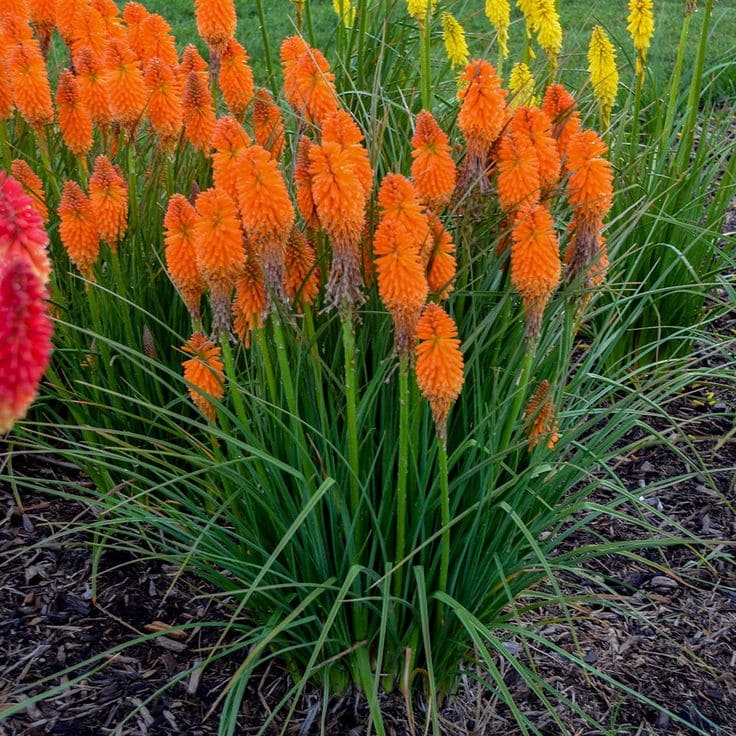
Midway through the garden, a bold stand of red hot pokers sends up striking towers of flame-colored blooms. Their unusual shape and searing colors create a dramatic scene that’s impossible for hummingbirds—and me—to ignore.
These perennials love full sun and well-drained soil, rewarding the garden with towering spikes of nectar-rich flowers. Their vertical form adds dynamic height, and when grouped together, they create a fiery beacon hummingbirds can spot from far across the yard.
#14. Agastache

Walking past a friend’s garden last summer, I was stopped by the most intoxicating fragrance—sweet, minty, and warm. It came from a thick stand of Agastache, buzzing with bees and shimmering with tiny visiting hummingbirds.
Agastache, often called hummingbird mint, sends up tall spires of spiky purple or pink flowers that bloom tirelessly through summer. Drought-tolerant and fragrant, it offers a nectar buffet while filling the garden air with a scent so lovely it feels like a secret gift.
#15. Texas Sage
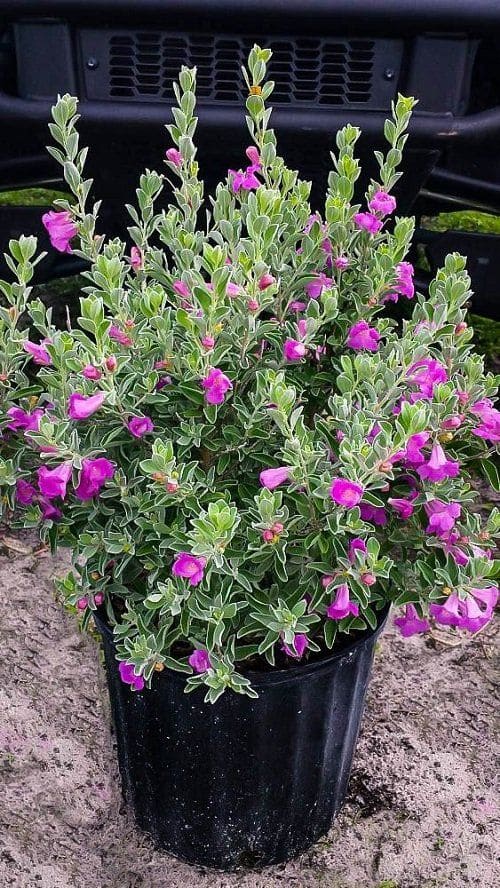
Where the soil runs dry and the summers bake the earth golden, Texas sage steps forward with resilience and grace. Its soft, silvery leaves and purple blooms bring a rugged beauty to the garden that hummingbirds adore.
Texas sage thrives under harsh conditions, needing little beyond full sun and good drainage. When it bursts into bloom after a summer rain, the hummingbirds come flocking, turning the dry garden into a sudden, vibrant gathering place.
#16. Foxglove

Nestled along the shaded edges of my garden, foxglove rises like an elegant forest of bells, each bloom tilting upward to catch the eye—and the hummingbirds’ keen attention. Their soft pinks, purples, and creams look almost painted in watercolor under the dappled light.
Foxglove thrives in partial shade and rich, well-drained soil. Its tall spires add dramatic vertical lines to the garden while offering deep, nectar-filled blossoms that hummingbirds love. Just a note of caution: foxglove is highly toxic if ingested, so be mindful when planting around curious pets or young children.
#17. Coral Bells
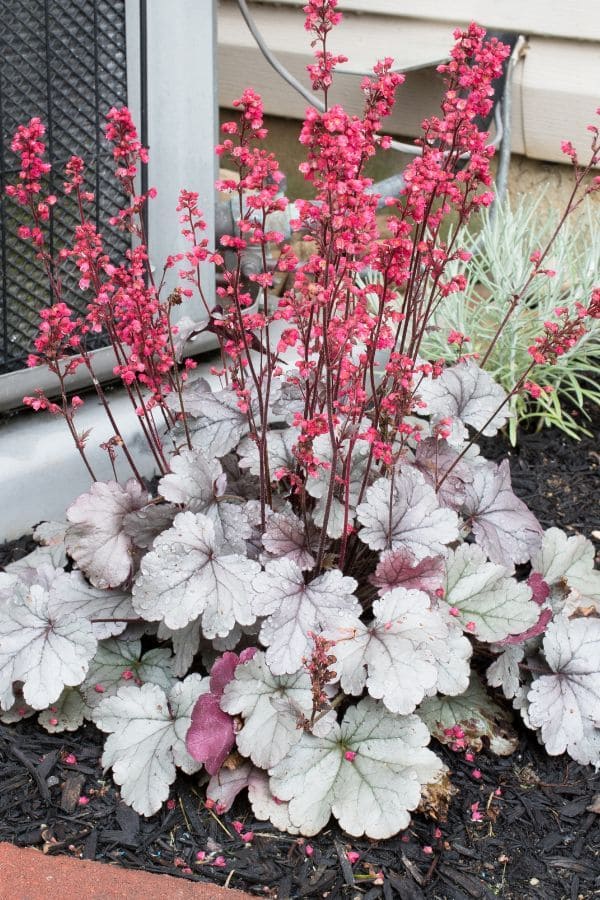
Coral bells nestle low to the ground in my shaded beds, sending up airy wands of tiny bell-shaped flowers that sway like dancers on slender stems. They don’t shout for attention, but the hummingbirds find them every time.
These hardy perennials thrive in sun or shade, depending on the variety, and their colorful foliage—ranging from lime green to deep burgundy—adds beauty even when the flowers fade. Coral bells offer an understated elegance that weaves beautifully into any hummingbird-friendly garden.
#18. Cuphea
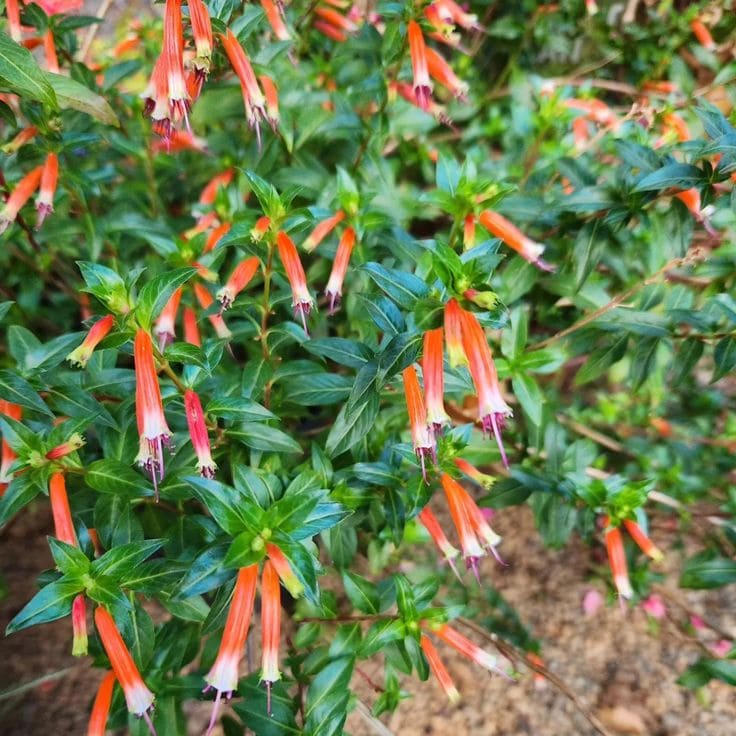
Near the sunniest corner of the patio, cuphea plants spill over their pots in a riot of tiny, cigar-shaped blooms glowing in brilliant reds and oranges. Hummingbirds dart to them with such regularity that the plants seem to vibrate with life.
Cuphea is a heat-loving, continuous bloomer that thrives in containers and borders. Its bright flowers stay open longer than many traditional garden favorites, providing an almost constant nectar source that keeps hummingbirds visiting all season long.
#19. Jacobs Ladder
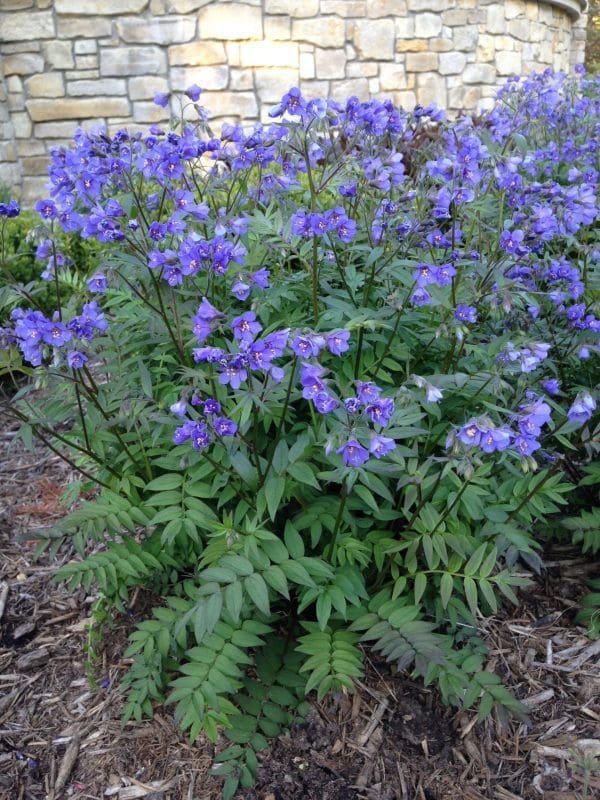
In the quiet, cooler parts of my shade garden, Jacob’s ladder threads its way upward, its soft ferny leaves lifting clusters of delicate blue flowers toward the sky. Hummingbirds find these blooms early, sipping lightly before flitting deeper into the garden.
Jacob’s ladder prefers moist, rich soil and shady to partly sunny spots, making it a wonderful choice for woodland or north-facing gardens. Its gentle beauty and reliable blooms create a peaceful nook where life feels slow and quietly abundant.
#20. Lantana
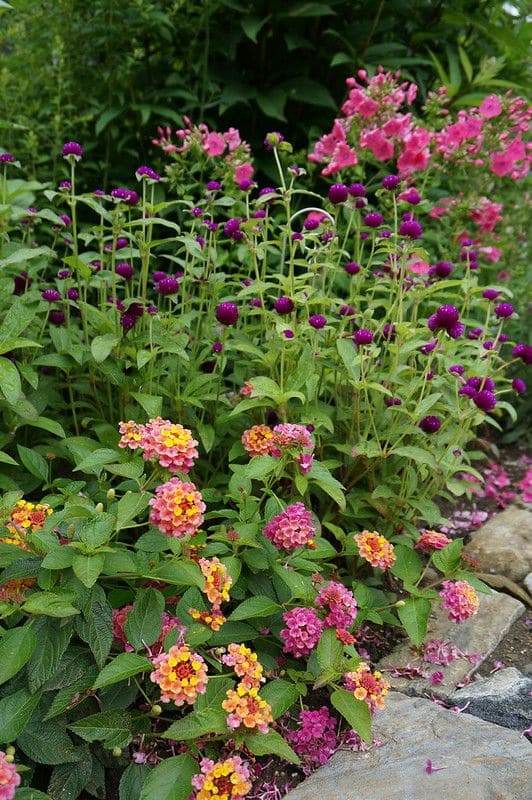
Down the garden path where the sun hits hardest, lantana bursts into joyful color—clusters of pink, yellow, orange, and red so vivid they seem to hum with energy. Hummingbirds aren’t the only ones who find it irresistible; butterflies often join the feast.
Lantana thrives with little care in hot, dry conditions, blooming profusely through the long summer months. It’s a powerhouse plant for pollinator gardens, and its vibrant display draws hummingbirds from near and far with almost magnetic pull.
#21. Trumpet Honeysuckle
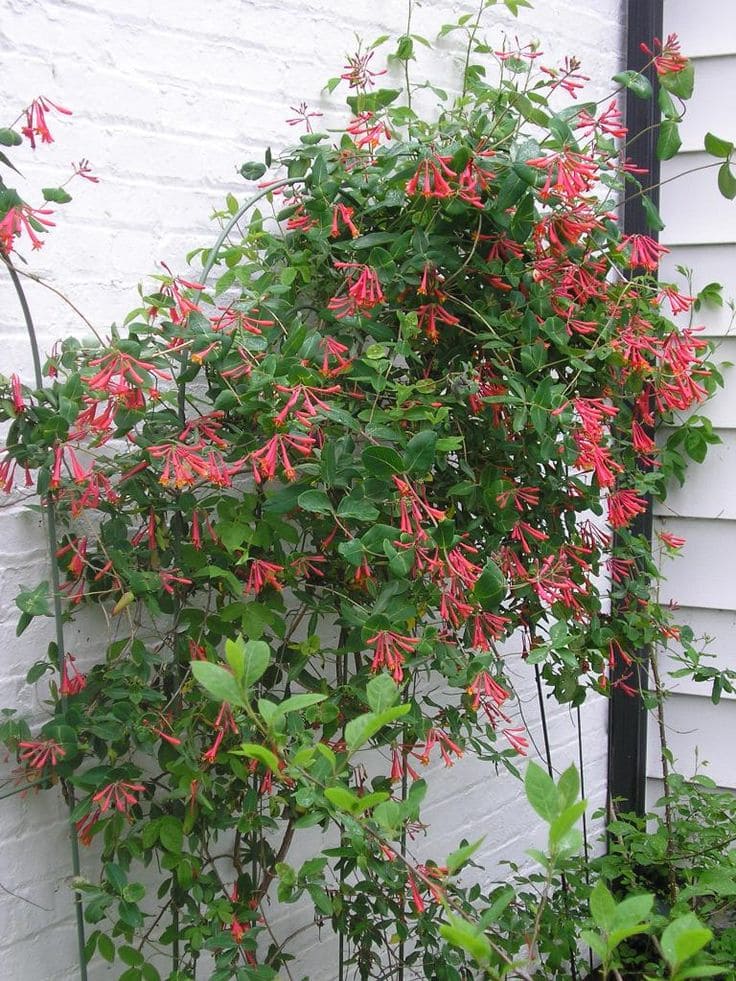
Along an old trellis salvaged from my grandfather’s farm, trumpet honeysuckle climbs in loose, lazy loops, its coral-red blossoms lighting up the green with vivid color. Watching hummingbirds thread themselves through the vines feels like watching threads weave a living tapestry.
Unlike invasive honeysuckle species, trumpet honeysuckle is a native treasure, rich in nectar and blooming again and again. Its clusters of long, tubular flowers offer perfect feeding stations for hummingbirds and bring a touch of wild beauty to the garden’s bones.
#22. Verbena
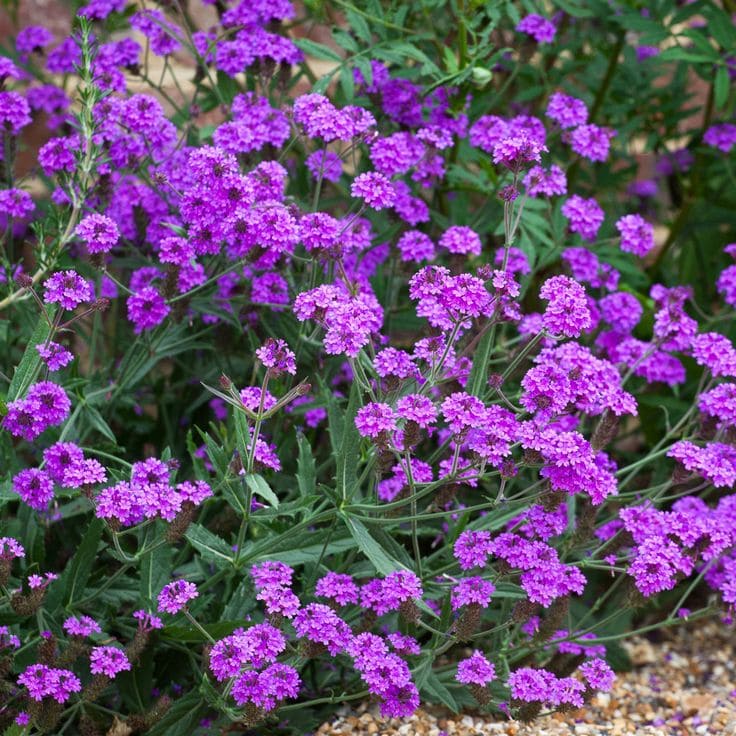
In pots and garden beds alike, verbena spills out in clouds of brilliant color—purple, magenta, and fiery scarlet—like the garden itself is exhaling bursts of joy. On sunny afternoons, it’s not unusual to find hummingbirds hovering among the tiny clustered blooms.
Verbena is heat-tolerant, low-maintenance, and blooms nonstop from late spring well into fall. Whether tucked into borders or allowed to cascade from hanging baskets, it keeps the garden lively, colorful, and humming with winged visitors.
Final Thoughts: Growing a Garden That Hums With Life
Building a garden for hummingbirds isn’t just about planting flowers—it’s about creating a place where life feels rich and endless, where every color sings and every corner hums with unseen wings. It’s about slowing down enough to notice the small, bright miracles that drift through on sunbeams.
When you choose blooms that welcome hummingbirds, you weave yourself into a much larger dance of nature. You offer shelter, sweetness, and sanctuary—and in return, your garden becomes more than beautiful. Let’s keep filling our gardens with hope, color, and the soft, wild music of hummingbird wings.
